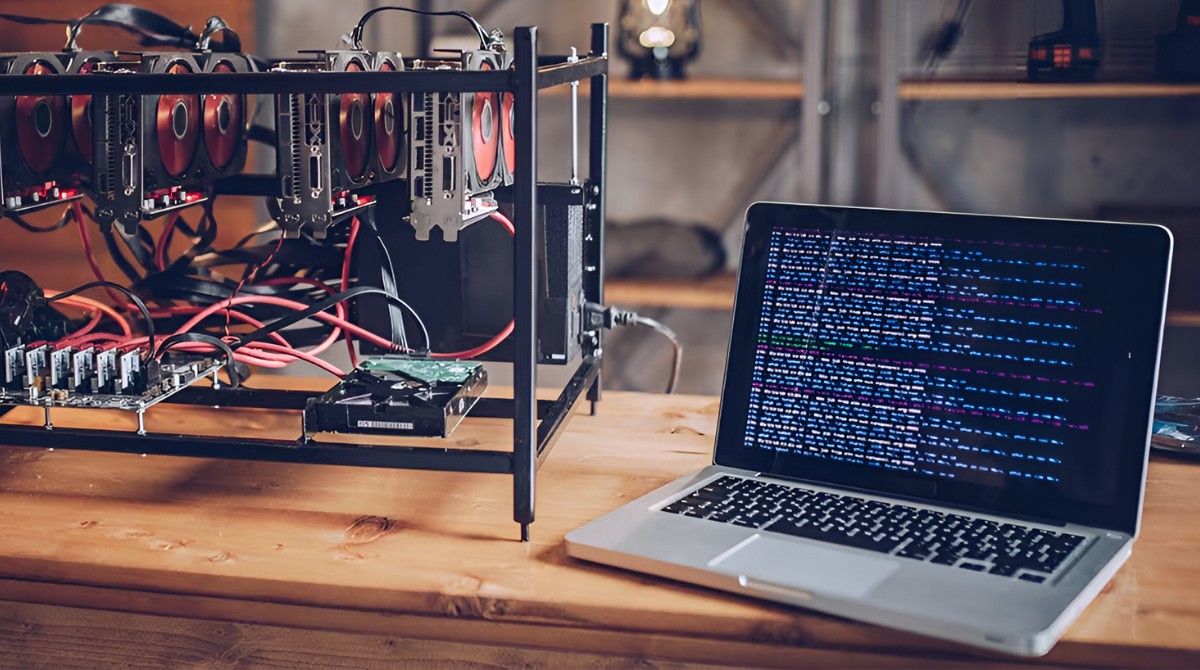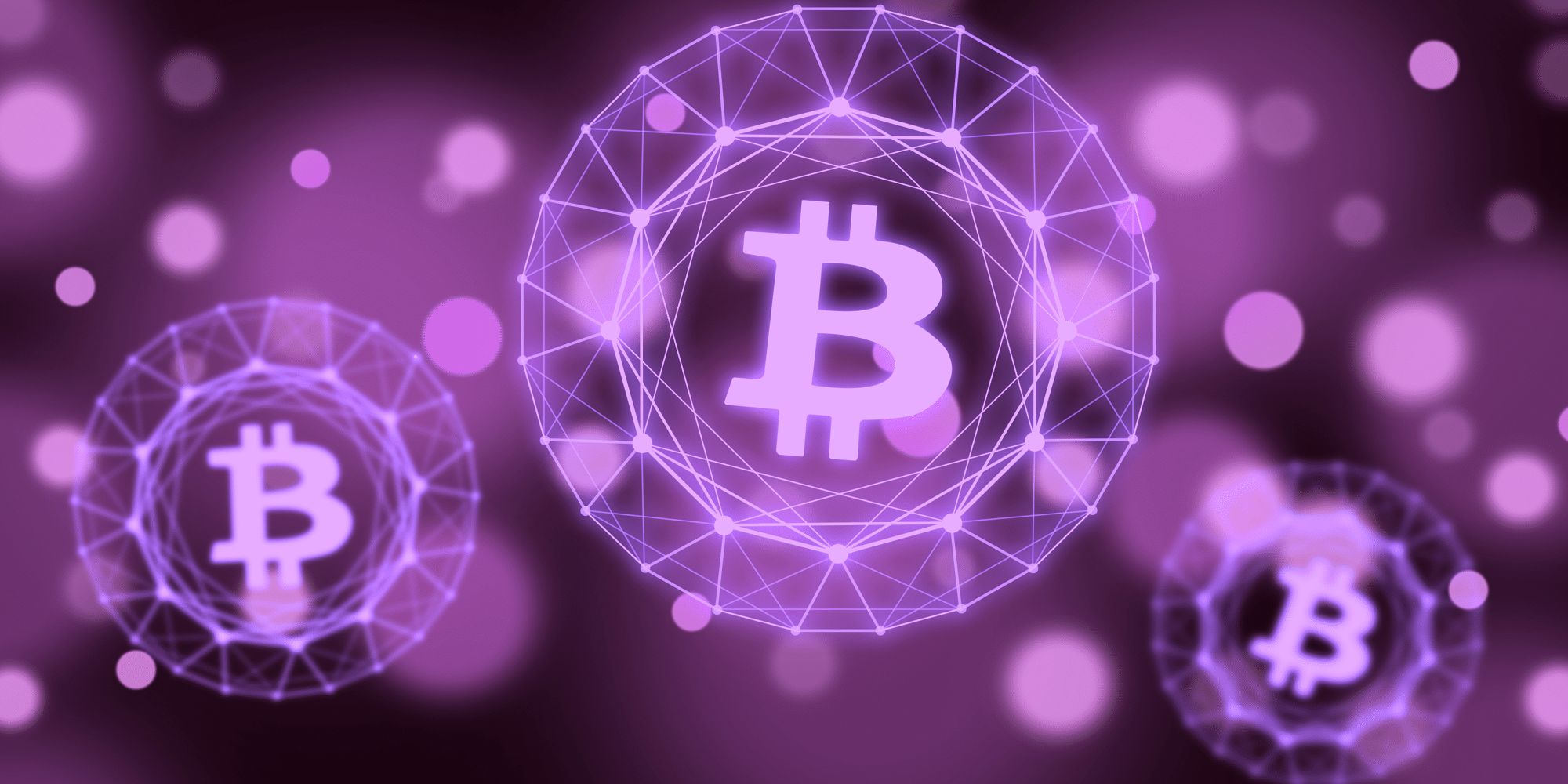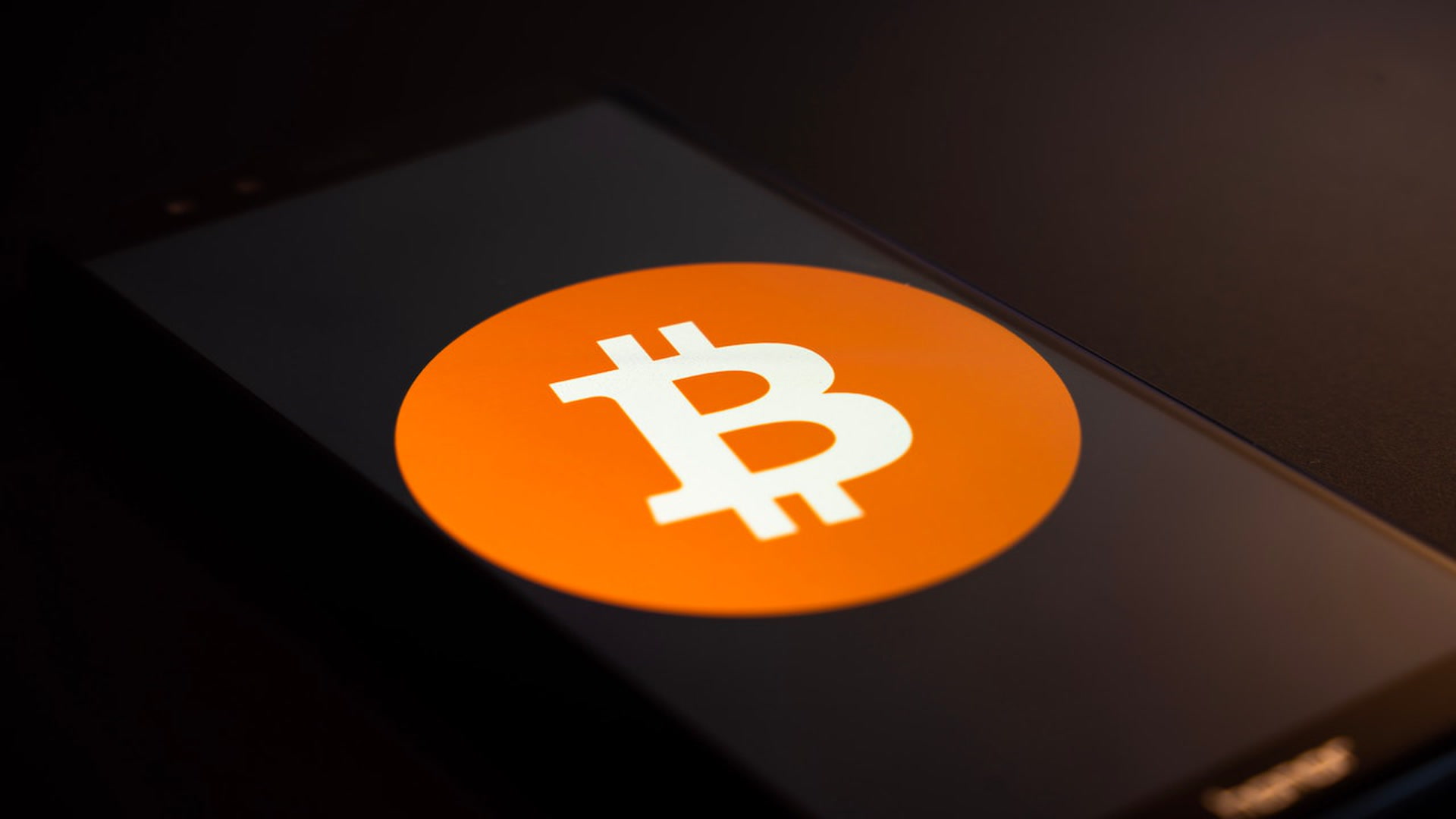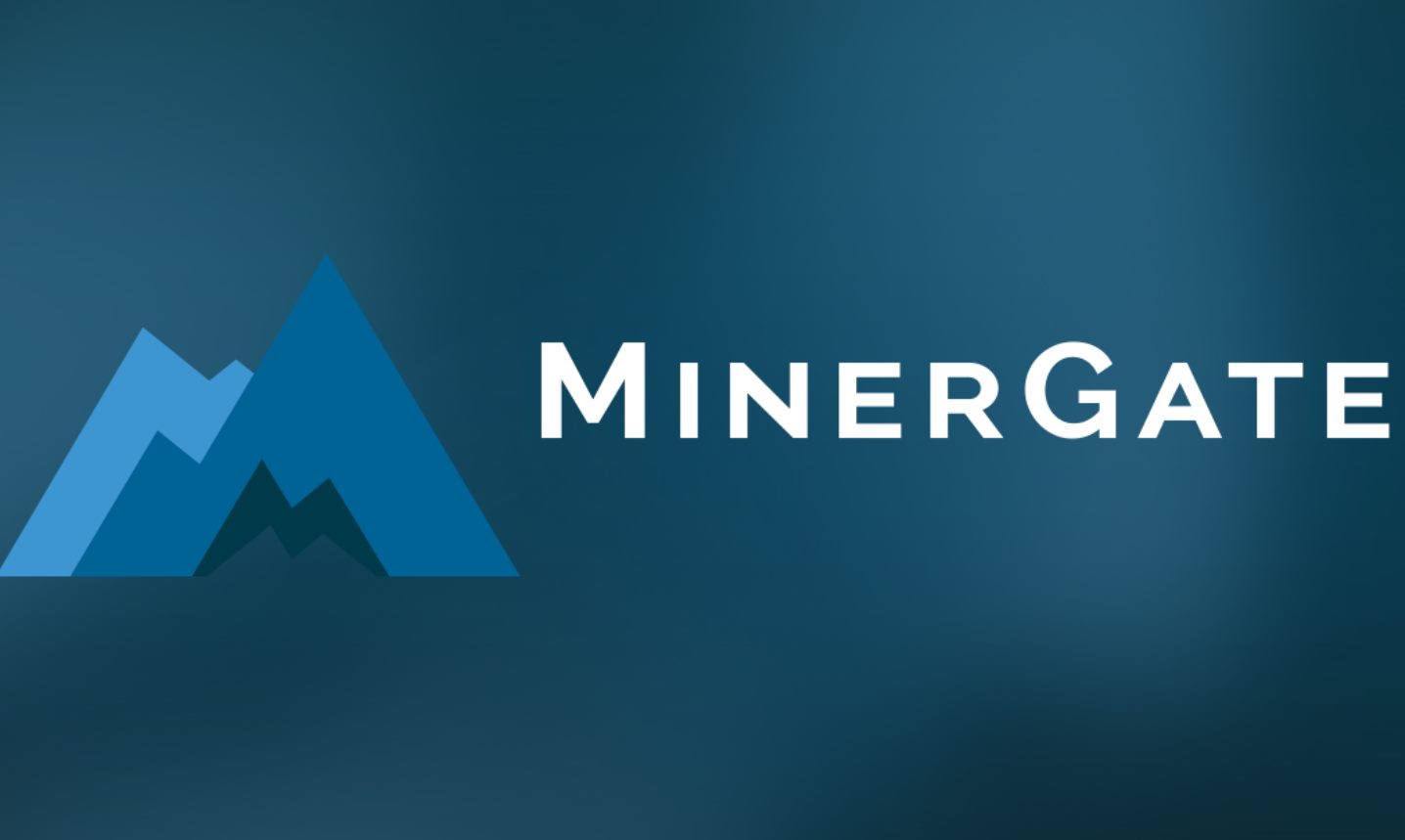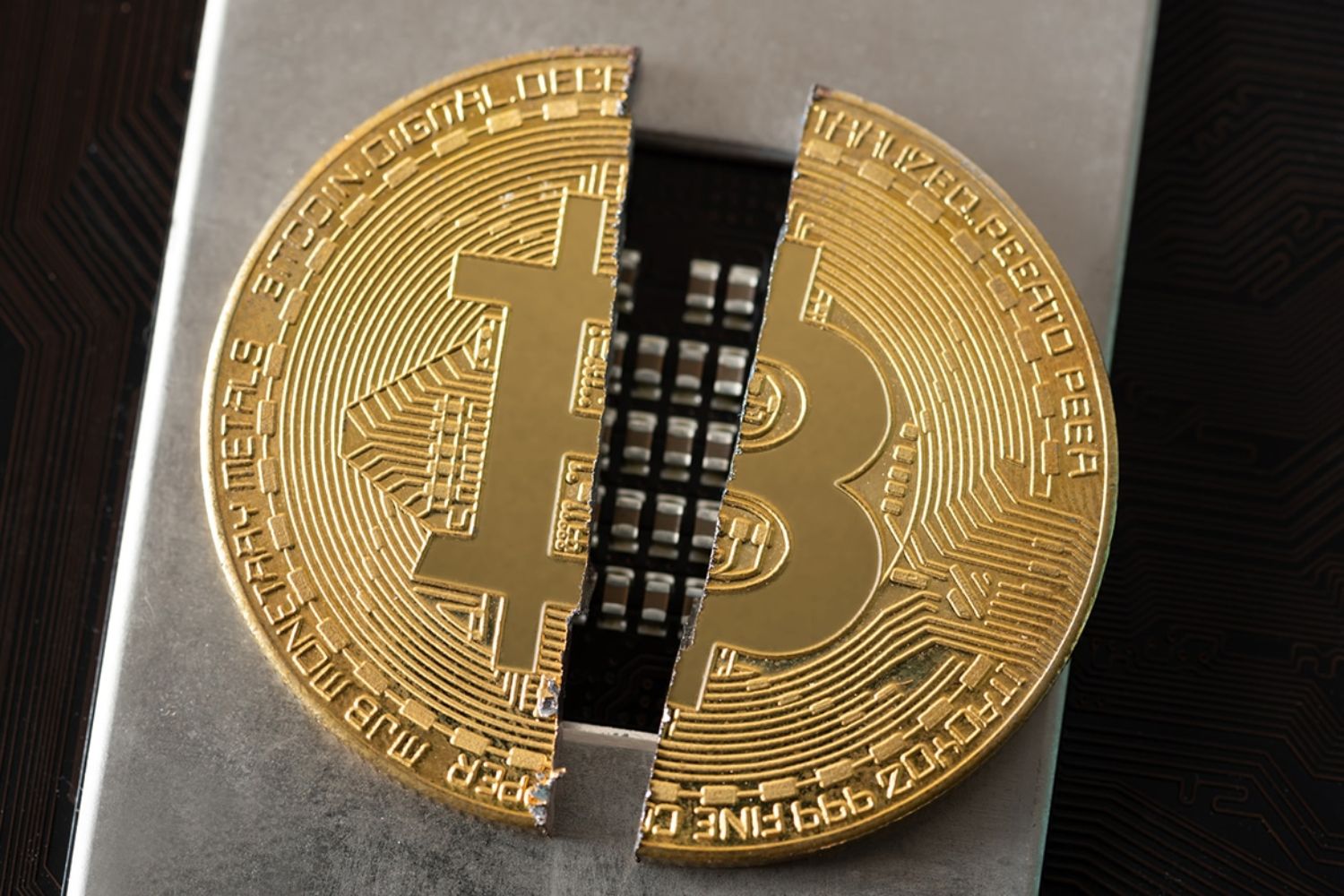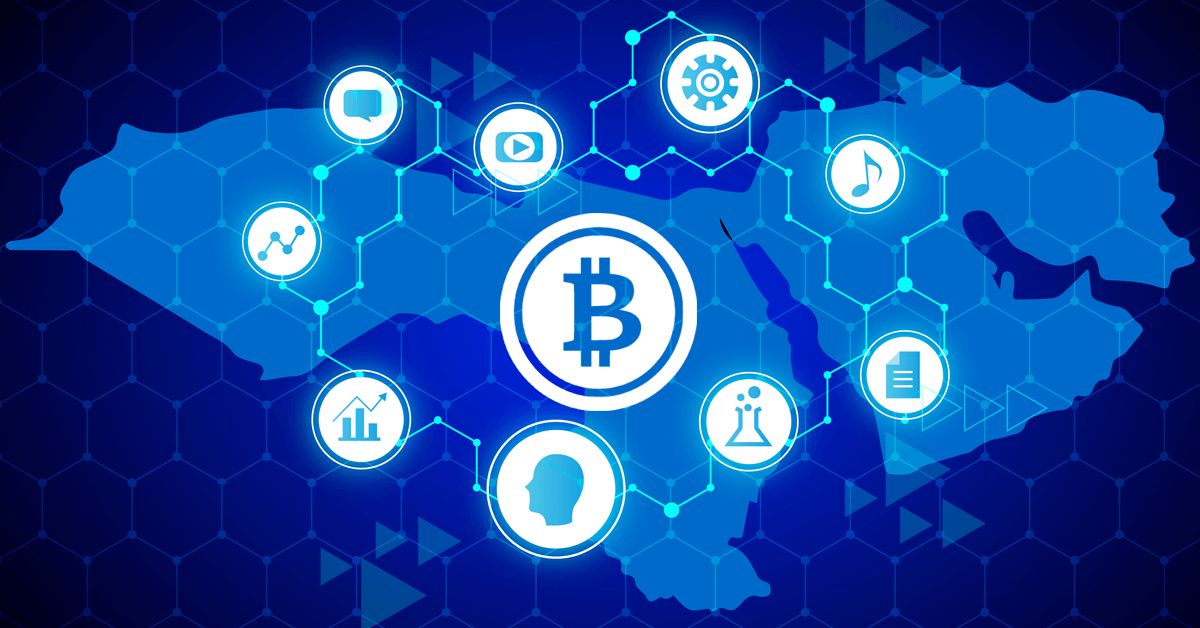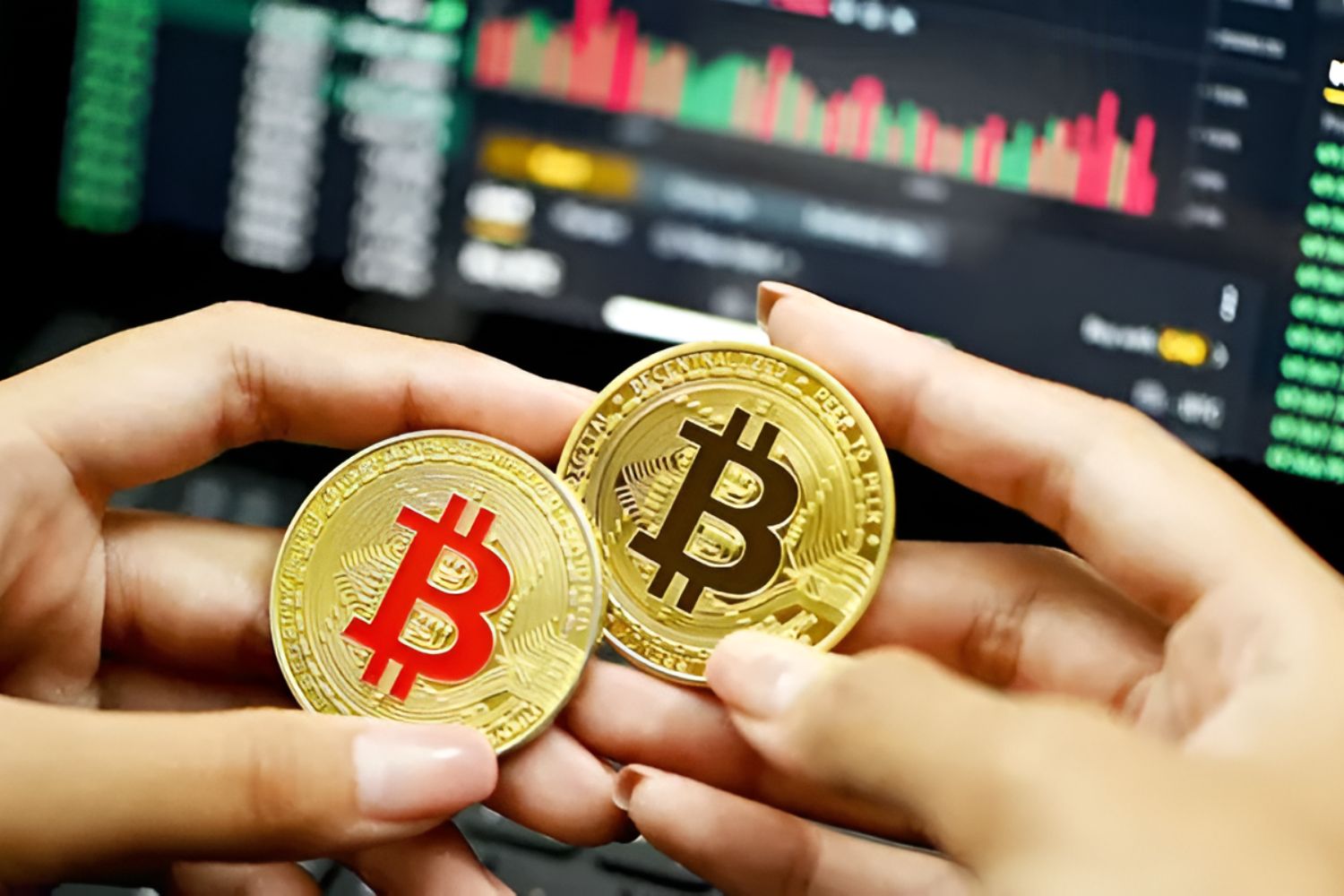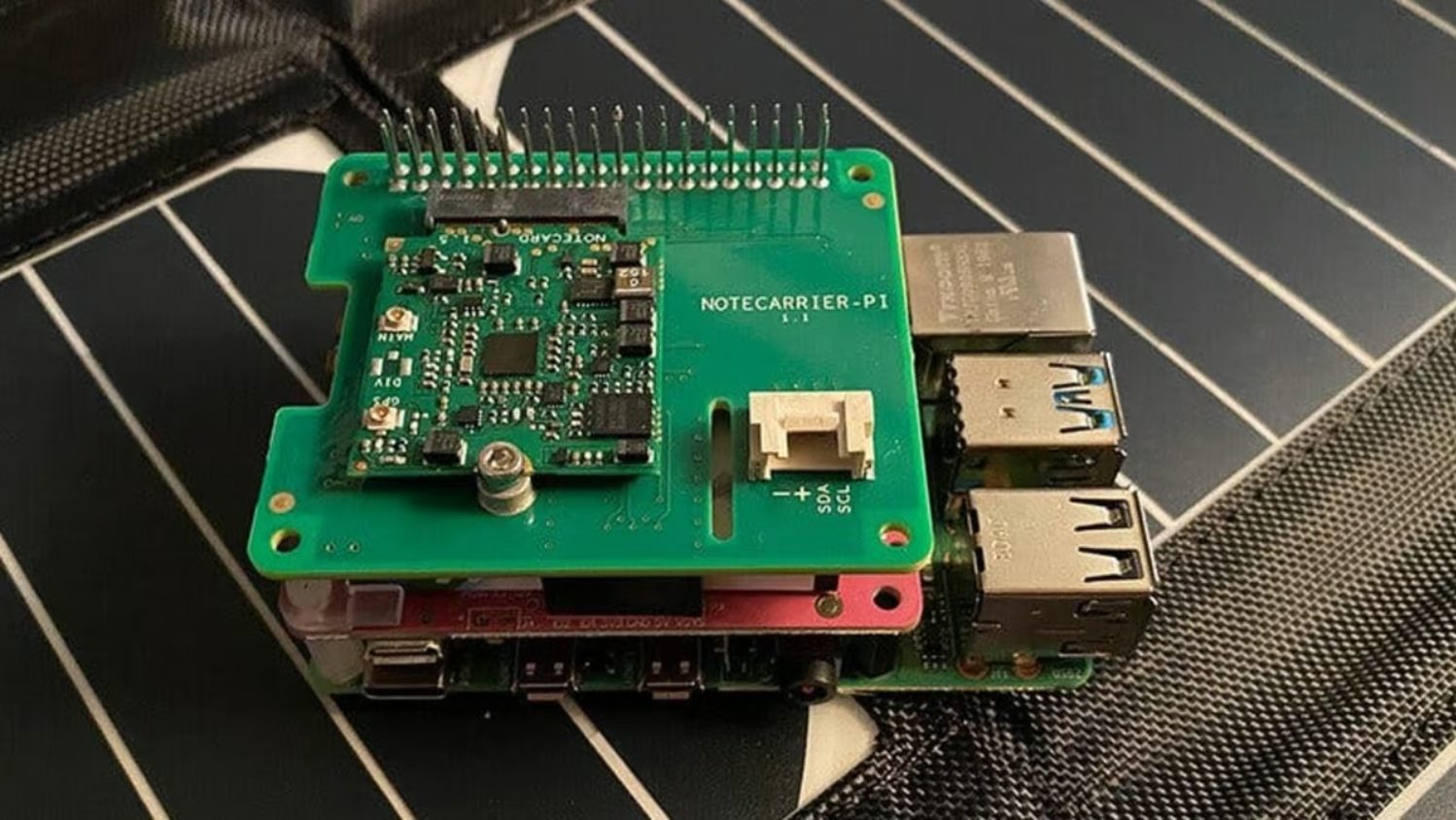Introduction
Welcome to the world of Bitcoin mining! If you’re interested in joining the exciting world of cryptocurrency, setting up your own Bitcoin miner is a crucial step. Bitcoin mining is the process of validating and verifying transactions on the Bitcoin network, and miners are rewarded with newly minted Bitcoins for their efforts. It’s a fascinating and potentially lucrative venture, but it requires the right hardware and setup to be successful.
In this guide, we’ll walk you through the process of setting up your own Bitcoin miner. We’ll cover everything from the basics of Bitcoin mining to choosing the right hardware, installing and configuring mining software, joining a mining pool, and optimizing your mining performance. Whether you’re a beginner or a seasoned miner, this guide will provide you with the essential knowledge to get started.
Before we delve into the details, it’s important to understand the basic concept of Bitcoin mining. Bitcoin is a decentralized digital currency that operates on a peer-to-peer network. Instead of being controlled by a central authority like a bank, Bitcoin transactions are verified by network participants called miners.
Miners use powerful computers to solve complex mathematical problems that validate and secure transactions. Once a miner successfully solves a problem, they add the verified transactions to the blockchain and are rewarded with a certain amount of Bitcoins for their work. This process is known as mining, and it’s the backbone of the entire Bitcoin network.
Now that we have a basic understanding of Bitcoin mining, let’s dive into the hardware requirements you’ll need to get started. Make sure you have a dedicated space for your mining setup, as it can generate a significant amount of heat and noise. Additionally, keep in mind that the cryptocurrency market is highly volatile, and mining profitability can fluctuate based on the value of Bitcoin.
What is Bitcoin Mining?
Bitcoin mining is the process by which new Bitcoins are created and transactions are verified on the Bitcoin network. It is an integral part of the decentralized system that Bitcoin operates on. Unlike traditional currency, which is issued and controlled by a central bank, Bitcoin is mined by individuals and organizations using specialized hardware.
The mining process involves solving complex mathematical problems using powerful computers. Miners compete against each other to find the solution to these problems, and the first one to find it is rewarded with a certain number of new Bitcoins. This process is known as proof of work and is essential for the security and integrity of the Bitcoin network.
When a Bitcoin transaction is made, it is broadcasted to the network and included in a pool of unverified transactions known as the mempool. Miners then select these transactions and include them in a new block, which is added to the blockchain, the public ledger that records all Bitcoin transactions.
To successfully mine Bitcoin, miners need to invest in specialized hardware called ASICs (Application-Specific Integrated Circuits). These devices are designed to perform the complex calculations required for mining at a much faster rate than regular computers or GPUs.
Once a miner finds a solution to a mathematical problem, they create a block that includes the transactions they have chosen and a unique identification code called a nonce. The nonce is a random number that the miners change with each attempt to find a solution. This is what makes the mining process a trial-and-error endeavor.
The miner needs to find a nonce that, when combined with the rest of the block’s data, results in a hash value that meets certain criteria. The hash value must be below a certain target value set by the network. This requirement ensures that finding a solution is difficult and resource-intensive, preventing any single miner or group of miners from gaining too much control over the network.
Once a miner finds a successful nonce, they broadcast the new block to the network, and other miners verify its validity before adding it to their copy of the blockchain. The miner is then rewarded with a predetermined amount of newly created Bitcoins, along with any transaction fees included in the block.
Bitcoin mining plays a crucial role not only in the creation of new Bitcoins but also in maintaining the security and integrity of the entire Bitcoin network. It ensures that transactions are verified and recorded in a decentralized and transparent manner, without the need for a central authority. As a result, Bitcoin mining has become a highly competitive and specialized industry, with miners constantly upgrading their hardware to stay ahead in the race for new Bitcoins.
Hardware Requirements
When it comes to Bitcoin mining, having the right hardware is essential for success. Let’s explore the key components and hardware requirements you need to consider.
1. ASIC Miners: The most important piece of hardware for Bitcoin mining is the ASIC (Application-Specific Integrated Circuit) miner. ASIC miners are specifically designed to solve the complex mathematical problems required for mining Bitcoin, making them much more efficient than traditional CPUs or GPUs.
2. Power Supply: Mining requires a significant amount of power, so choosing the right power supply is crucial. Look for a high-quality power supply that provides enough wattage to support the mining hardware. It’s also important to consider factors such as efficiency, reliability, and compatibility with your mining setup.
3. Cooling Solutions: Mining generates a lot of heat, so proper cooling is necessary to prevent your hardware from overheating. Investing in cooling solutions such as fans or even liquid cooling systems can help maintain optimal operating temperatures for your mining equipment.
4. Internet Connection: A stable and reliable internet connection is essential for mining. You don’t need a particularly high-speed connection, but it should be consistent and capable of handling the data traffic generated by mining.
5. Mining Rig Frame: While not essential, a mining rig frame provides a sturdy and organized structure to house your mining hardware. It allows proper ventilation and keeps the components secure.
6. Additional Accessories: Depending on your setup, you may also need additional accessories such as cables, power connectors, and a dedicated space for your mining equipment.
Keep in mind that the hardware requirements for Bitcoin mining can vary depending on factors such as the mining algorithm, the current network difficulty, and the specific ASIC miner you choose. It’s important to do thorough research and consider factors such as upfront costs, power consumption, and potential profitability before investing in mining hardware.
If you’re just starting and don’t want to invest in expensive mining hardware, you can also consider cloud mining services. These services allow you to lease mining power from a third-party provider, eliminating the need for your own hardware. However, it’s important to carefully research and choose a reputable cloud mining provider to avoid potential scams or poor returns on your investment.
Now that we’ve covered the hardware requirements, the next step is choosing the right mining hardware for your mining setup. We’ll explore this topic in the next section.
Choosing the Right Mining Hardware
When it comes to Bitcoin mining, choosing the right mining hardware is crucial for maximizing your mining efficiency and profitability. Here are some key points to consider when selecting your mining hardware:
1. Hash Rate: The hash rate refers to the computational power of the mining hardware. It represents the number of mathematical calculations the hardware can perform per second. A higher hash rate means more chances of finding a solution and earning rewards.
2. Power Consumption: Mining can be energy-intensive, so it’s important to consider the power consumption of the mining hardware. Look for hardware that provides a good balance between high hash rates and energy efficiency. This will help reduce your electricity costs and increase your profits.
3. Cost: While it’s tempting to go for the most powerful and expensive mining hardware, it’s important to consider your budget and the potential return on investment. Calculate the cost of the hardware and estimate your expected mining earnings to determine if the investment is worthwhile.
4. Manufacturer Reputation: When investing in mining hardware, it’s important to choose reputable manufacturers known for producing reliable and high-quality equipment. Research different manufacturers, read reviews, and consider the warranties and customer support they offer.
5. Longevity and Upgradability: Technology in the cryptocurrency industry is constantly evolving. Consider the lifespan of the mining hardware and the possibility of upgrades or future enhancements. Investing in hardware that can adapt to future changes will help ensure the longevity of your mining operations.
6. Compatibility: Ensure that the mining hardware you choose is compatible with the mining software you plan to use. Different hardware may require specific mining software, so it’s crucial to check compatibility to avoid compatibility issues or inefficiencies.
7. Noise and Heat: Keep in mind that mining hardware can generate a significant amount of noise and heat. Consider the noise levels and cooling requirements of the hardware, especially if you plan to set up your mining rig in a residential or shared space.
Remember, the mining industry is highly competitive, and new and more powerful mining hardware is constantly being developed. It’s important to stay informed about the latest advancements and trends in the mining hardware market to make informed decisions for your mining operations.
Before making a final decision, take the time to research and compare different mining hardware options. Consider factors such as upfront costs, power consumption, hash rates, and potential profitability. Additionally, keep an eye on the mining difficulty and cryptocurrency market trends, as these can impact your mining rewards and overall profitability.
Once you’ve chosen the right mining hardware, the next step is setting up the power supply for your mining rig. We’ll cover that in the next section.
Setting up the Power Supply
Setting up a reliable and efficient power supply is crucial for your Bitcoin mining rig. The power supply not only provides the necessary electricity for your mining hardware but also ensures its stability and longevity. Here are the key steps to setting up the power supply for your mining rig.
1. Calculate Power Requirements: Start by calculating the total power requirements of your mining rig. Consider the power consumption of each component, including the ASIC miner, cooling fans, and any other accessories. You can usually find the power consumption specifications for each component in the manufacturer’s documentation or on their website.
2. Choose a High-Quality Power Supply: Invest in a high-quality power supply that can deliver enough wattage to support your mining hardware. Look for power supplies that are specifically designed for mining operations, as they are built to handle the high demands and constant load of mining equipment. Choose a reputable brand with good reviews to ensure reliability and safety.
3. Consider Efficiency: Energy efficiency is an important factor to consider when choosing a power supply. Look for power supplies that have high efficiency ratings, as they will help reduce your electricity costs. Power supplies with certifications such as 80 PLUS Gold or Platinum are usually more energy-efficient.
4. Connect Power to Components: Once you have your power supply, it’s time to connect it to your mining components. Make sure to follow the manufacturer’s instructions and consult the documentation if needed. Connect the main power cables to the ASIC miner and any additional components, such as cooling fans or riser cards.
5. Ensure Proper Ventilation: Adequate ventilation is essential to keep your mining rig cool and prevent overheating. Position your mining equipment in a well-ventilated area and consider using additional cooling solutions, such as fans or even liquid cooling systems, if necessary. Proper airflow and temperature management will help optimize the performance and lifespan of your mining hardware.
6. Safety Precautions: When dealing with electricity, it’s crucial to take safety precautions. Make sure to disconnect the power supply and turn off the power switch before making any connections or adjustments. Ensure that all cables are properly secured and avoid overloading the power supply to prevent damage or accidents.
7. Monitoring and Maintenance: Regularly monitor the performance of your power supply and check for any signs of issues or abnormalities. Pay attention to the temperature of the power supply and ensure that it’s within the recommended operating range. Clean dust and debris from the power supply regularly to maintain optimal performance.
By following these steps and setting up a proper power supply for your mining rig, you can ensure the stability and longevity of your mining operations. Remember to prioritize safety and invest in high-quality power supplies to minimize the risk of electrical problems or equipment failure.
Now that your power supply is set up, the next step is installing and configuring the mining software. We’ll explore that in the next section.
Installing and Configuring Mining Software
Once you have set up the hardware and power supply for your Bitcoin mining rig, the next step is to install and configure the mining software. The mining software allows your hardware to communicate with the Bitcoin network, participate in mining, and manage your mining operations. Here’s a step-by-step guide on how to install and configure your mining software:
1. Research and Choose Mining Software: There are various mining software options available, each with its own features and compatibility. Research different mining software options and choose one that is compatible with your hardware and meets your mining goals. Popular options include CGMiner, BFGMiner, EasyMiner, and BitMinter.
2. Download and Install the Software: Once you have chosen your mining software, download it from the official website or a reputable source. Make sure to download the version that is compatible with your operating system. Follow the installation instructions provided by the software developer.
3. Configure the Mining Software: After installing the mining software, you will need to configure it to connect to the Bitcoin network and your mining hardware. Open the mining software and navigate to the configuration settings. Set up the mining pool details, such as the pool URL, username, and password. If you’re planning to mine solo, configure your software accordingly.
4. Optimize Performance: Mining software often provides options to optimize the performance of your mining hardware. Explore these settings and adjust them based on your hardware specifications and personal preferences. Some software also allows you to set temperature limits or fan speeds to maintain optimal operating conditions.
5. Test and Monitor: Once your mining software is configured, it’s time to test and monitor your mining operation. Start the mining process and ensure that your software is successfully detecting and utilizing your mining hardware. Monitor the hash rate, temperature, and accepted/rejected shares to ensure your mining rig is operating as expected.
6. Stay Updated: The cryptocurrency mining industry is constantly evolving, and software updates are released to improve performance, fix bugs, and adapt to changing network conditions. Stay informed about software updates and security patches and keep your mining software up to date to ensure optimal stability and performance.
7. Troubleshooting: If you encounter any issues or errors during the installation or configuration process, refer to the software documentation, online forums, or support channels for assistance. Troubleshooting can involve checking your hardware connections, updating drivers, or changing configuration settings.
Remember to always use legitimate and trusted mining software, as there are fraudulent programs out there that may compromise your security or steal your mining rewards. Stick to reputable sources and verify the authenticity of the software before installation.
With your mining software successfully installed and configured, you’re ready to join a mining pool. We’ll explore the benefits of joining a mining pool in the next section.
Joining a Mining Pool
Joining a mining pool is a popular option for Bitcoin miners, especially for those with limited hardware resources. Mining alone (also known as solo mining) can be challenging and unpredictable, as it requires a significant amount of computational power to compete with large mining operations. Joining a mining pool allows miners to combine their resources and collectively work towards finding blocks and receiving more consistent rewards. Here’s what you need to know about joining a mining pool:
1. What is a Mining Pool: A mining pool is a group of miners who come together and combine their hashing power to increase their chances of successfully mining blocks. Instead of competing against each other, pool members work cooperatively, and when a block is mined, the rewards are distributed among the participants based on their contributed hashing power.
2. Benefits of Joining a Mining Pool: Joining a mining pool offers several advantages. First and foremost, it increases the likelihood of earning regular rewards, as the combined hashing power of the pool improves the chances of finding blocks. It also provides a more stable income stream than solo mining, where rewards can be infrequent and unpredictable. Additionally, mining pools often offer features such as monitoring tools, user-friendly interfaces, and customer support.
3. Choosing a Mining Pool: When selecting a mining pool, consider factors such as the pool’s reputation, fee structure, payout mechanisms, and size. Larger pools tend to have more consistent payouts but may charge higher fees. Research different pools, read user reviews, and compare their features before making a decision. Popular mining pools include Slush Pool, F2Pool, Poolin, and Antpool.
4. Joining the Pool: To join a mining pool, you’ll need to create an account and provide the necessary details, such as your Bitcoin wallet address and payout threshold. Some pools may require additional information or have specific registration steps. Follow the instructions provided by the pool and ensure that you understand the terms and conditions, including the fee structure and payment schedule.
5. Configuring Your Mining Software: After joining a mining pool, you’ll need to configure your mining software to connect to the pool’s server. Update the mining software’s configuration file with the pool’s URL, username, and password. Make sure to choose the appropriate mining software settings that align with the pool’s requirements, such as stratum mining protocol details.
6. Monitoring and Analyzing: Once you’ve joined a mining pool and configured your software, regularly monitor your mining operation and track your pool’s performance. Check the pool’s statistics, such as hash rate and shares submitted, to ensure your mining rig is contributing effectively. Analyze your mining statistics and payouts to optimize your mining strategy and maximize your profits.
7. Pool Hopping: Some miners engage in a practice called “pool hopping,” where they switch between different mining pools to take advantage of fluctuations in pool performance and reward structures. While this can be profitable in the short term, many pools have implemented measures to discourage pool hopping, such as delayed payout periods or penalizing frequent switching. Be aware of the specific policies and terms regarding pool hopping in the pool you join.
Joining a mining pool can be a beneficial choice for most Bitcoin miners. It provides a more predictable income stream and allows smaller miners to participate in the mining process. However, it’s essential to choose a reputable and reliable pool and stay informed about any changes or updates from the pool operator. With your mining pool set up, it’s time to connect to the pool and start mining for rewards.
Connecting to a Mining Pool
Once you have chosen a mining pool to join, the next step is to connect your mining hardware to the pool’s server. Connecting to a mining pool is a straightforward process, and it allows you to start contributing your hashing power towards mining blocks and earning rewards. Here’s a step-by-step guide on how to connect to a mining pool:
1. Obtain Pool Information: Before connecting to a mining pool, you need to gather the necessary information provided by the pool. This typically includes the pool’s URL or stratum address, port number, and your worker credentials (username and password). The pool’s website or documentation should have the required details.
2. Update Mining Software Configuration: Access the configuration file of your mining software and update the mining pool settings. Modify the URL or stratum address to match the pool’s server and enter the correct port number. Then, add your worker credentials, including the username and password associated with your mining account.
3. Save and Restart Mining Software: After updating the configuration file, save the changes and restart your mining software. This allows the software to establish a connection with the mining pool’s server using the provided pool information.
4. Monitor Connection Status: Once your mining software restarts, monitor the connection status in the mining software’s interface. Look for indications that the software has successfully connected to the pool’s server, such as displayed hash rate, shares submitted, and accepted/rejected status. This confirms that your mining rig is actively contributing to the mining pool.
5. Analyze Pool Statistics: Periodically check the pool’s statistics on its website or through the mining software’s interface. This includes monitoring the overall hash rate, number of active miners, and blocks found. Analyzing these statistics helps you understand the pool’s performance and your contribution to it.
6. Troubleshooting Connection Issues: If you encounter any connection issues or have trouble establishing a connection with the mining pool, there are a few troubleshooting steps you can take. First, ensure that your internet connection is stable and functioning properly. Verify that the pool’s URL or stratum address, port number, and worker credentials are entered correctly in the mining software’s configuration file. If the problem persists, consult the mining pool’s support documentation or reach out to their support team for assistance.
7. Monitor Mining Rig Performance: Keep an eye on your mining rig’s performance and ensure that it is consistently submitting shares and receiving assignments from the pool. Monitor your mining software’s interface for any abnormal behavior or error messages. Regularly check the pool’s website or your mining account dashboard for updates on your mining rewards and payouts.
Connecting to a mining pool is a vital step in maximizing your chances of earning steady rewards as a Bitcoin miner. By contributing your hashing power to a pool, you increase the likelihood of finding blocks and receiving your share of the rewards. Stay vigilant and monitor your mining rig’s connectivity and performance to ensure a smooth and profitable mining experience.
Optimizing Mining Performance
Optimizing your mining performance is essential for maximizing your mining efficiency and increasing your chances of earning higher rewards. With the right strategies and adjustments, you can ensure that your mining operation is running at its best. Here are some key tips for optimizing your mining performance:
1. Hardware Optimization: Fine-tuning your hardware settings can significantly improve mining performance. Experiment with different settings such as core clock speed, memory clock speed, and power limit to find the optimal balance between performance and power consumption. Keep an eye on the temperature of your mining hardware and ensure it stays within safe operating limits.
2. Mining Software Configuration: The mining software you are using may have additional configuration options that can be tweaked for better performance. Explore the settings and options provided by the software and adjust them according to your hardware and mining goals. Options such as intensity, thread concurrency, and kernel settings can have a significant impact on your mining efficiency.
3. Pool Selection: Choosing the right mining pool can impact your mining performance. Consider factors such as the pool’s size, hash rate, and payout structures. Larger pools generally offer more consistent rewards, but smaller pools may provide opportunities for higher payouts. It’s important to find a pool that aligns with your mining goals and offers a fair and transparent reward system.
4. Internet Connectivity: A stable and reliable internet connection is crucial for optimal mining performance. Ensure that you have a high-speed and low-latency connection to minimize mining disruptions and maximize the number of successfully submitted shares. Consider using an Ethernet connection instead of relying on WiFi for a more stable connection.
5. Regular Monitoring and Maintenance: Continuously monitor the performance of your mining rig and perform regular maintenance tasks. Keep an eye on key indicators such as hash rate, accepted/rejected shares, and temperature. Regularly clean your mining hardware to prevent dust buildup and check for any loose connections or hardware issues that may affect performance.
6. Stay Updated: Keep your mining software and drivers up to date with the latest versions provided by the manufacturer. Software updates often include bug fixes, performance improvements, and compatibility enhancements. Staying updated ensures that you are benefiting from the latest optimizations and improvements in the mining software ecosystem.
7. Efficient Cooling and Ventilation: Proper cooling is crucial for maintaining optimal mining performance. Ensure that your mining rig is adequately cooled by using fans, proper ventilation, and even liquid cooling systems if necessary. Keep the temperature of your mining hardware within the specified operating range to prevent overheating, which can lead to reduced performance and potential damage.
8. Research and Education: Stay informed about the latest developments and best practices in the mining community. Join mining forums, participate in discussions, and learn from experienced miners. By constantly learning and adapting your strategies, you can optimize your mining performance and enhance your overall mining experience.
Optimizing your mining performance is an ongoing process. It requires experimentation, monitoring, and continuous improvement. By implementing these tips and staying proactive in managing your mining operations, you can increase your chances of achieving higher rewards and profitability as a Bitcoin miner.
Monitoring and Troubleshooting
Monitoring your mining operation and being prepared to troubleshoot any issues that may arise are essential for maintaining optimal performance and maximizing your mining rewards. Here are some key steps to effectively monitor and troubleshoot your Bitcoin mining setup:
1. Regular Performance Monitoring: Monitor the performance of your mining rig on a regular basis. Keep an eye on metrics such as hash rate, accepted/rejected shares, and temperature. This allows you to quickly identify any issues or abnormalities that may be affecting your mining performance.
2. Mining Pool Statistics: Check the statistics and information provided by your mining pool. This can include details such as your current mining status, expected earnings, and historical performance. Monitoring these statistics helps you assess the overall health of your mining operation and gauge the effectiveness of your mining strategy.
3. Network and Internet Connectivity: Ensure that your network connection is stable and reliable. Periodically check your internet speed and latency to minimize disruptions in mining. If you experience connectivity issues, troubleshoot your network equipment or consider switching to a more stable internet connection.
4. Hardware Health and Maintenance: Regularly inspect and maintain your mining hardware. Keep an eye out for any signs of wear or damage, loose connections, or abnormal behavior. Clean your hardware periodically to remove dust and debris, as this can impact performance and increase the risk of overheating.
5. Temperature Management: Monitor and manage the temperature of your mining equipment. Overheating can lead to reduced performance and potentially damage your hardware. Ensure that your mining rig is adequately cooled using fans, proper ventilation, and temperature monitoring tools. Consider adjusting fan speeds or investing in additional cooling solutions if necessary.
6. Software Updates: Stay up to date with the latest updates and patches for your mining software. Software updates often include bug fixes, performance improvements, and enhanced compatibility with mining protocols. Regularly check for updates from the software developer and apply them to ensure optimal performance and security.
7. Troubleshooting Common Issues: Be prepared to troubleshoot common issues that may arise during your mining operations. These can include problems such as software crashes, driver conflicts, or connectivity disruptions. Consult the documentation and support resources provided by your mining software and hardware manufacturers. Mining forums and online communities can also offer valuable insights and solutions.
8. Research and Learn: Stay informed about the latest mining trends, techniques, and troubleshooting strategies. Engage with mining communities, forums, and online resources to learn from experienced miners. Regularly educate yourself about new developments and innovations in the mining industry to ensure that you are making the most of your mining setup.
Monitoring and troubleshooting are ongoing processes in Bitcoin mining. By being proactive in monitoring your mining performance, promptly addressing any issues that arise, and staying informed about best practices, you can optimize your mining operation and achieve better results over time.
Conclusion
Congratulations! You have reached the end of this guide on setting up a Bitcoin miner. We have covered the key steps and considerations necessary to start your own mining operation. By now, you should have a good understanding of what Bitcoin mining is and the hardware requirements involved.
Setting up your Bitcoin mining rig requires careful planning and attention to detail. From choosing the right mining hardware to configuring the software, joining a mining pool, and optimizing your mining performance, each step plays a crucial role in your mining success.
Remember to continuously monitor your mining operation and be prepared to troubleshoot any issues that may arise. Regular maintenance and staying informed about the latest developments in the mining industry are essential for maintaining optimal performance.
Bitcoin mining can be an exciting and potentially rewarding venture, allowing you to be part of a decentralized network and contribute to the validation of transactions. However, it’s crucial to keep in mind that the cryptocurrency market is highly volatile, and mining profitability can fluctuate. Conduct thorough research, assess your budget, and stay up to date with market trends to make informed decisions.
As technology and the cryptocurrency landscape evolve, always be open to learning and adapting your strategies. Engage with mining communities, forums, and online resources to stay informed about the latest trends and innovations in the industry.
Now it’s time to put your knowledge into action. Set up your hardware, connect to a mining pool, and embark on your Bitcoin mining journey. Good luck, happy mining, and may your mining rig be filled with successful blocks and plentiful rewards!







